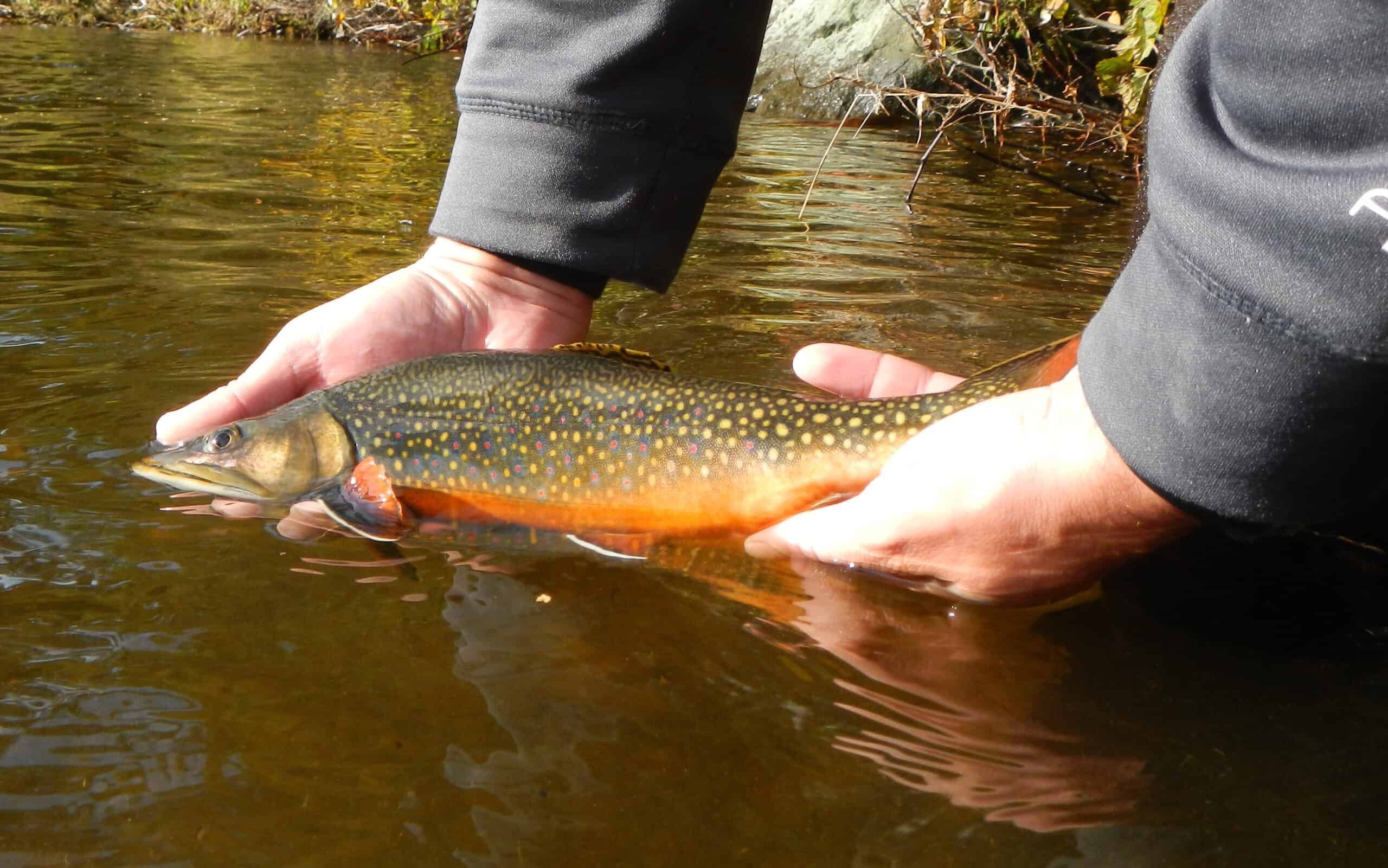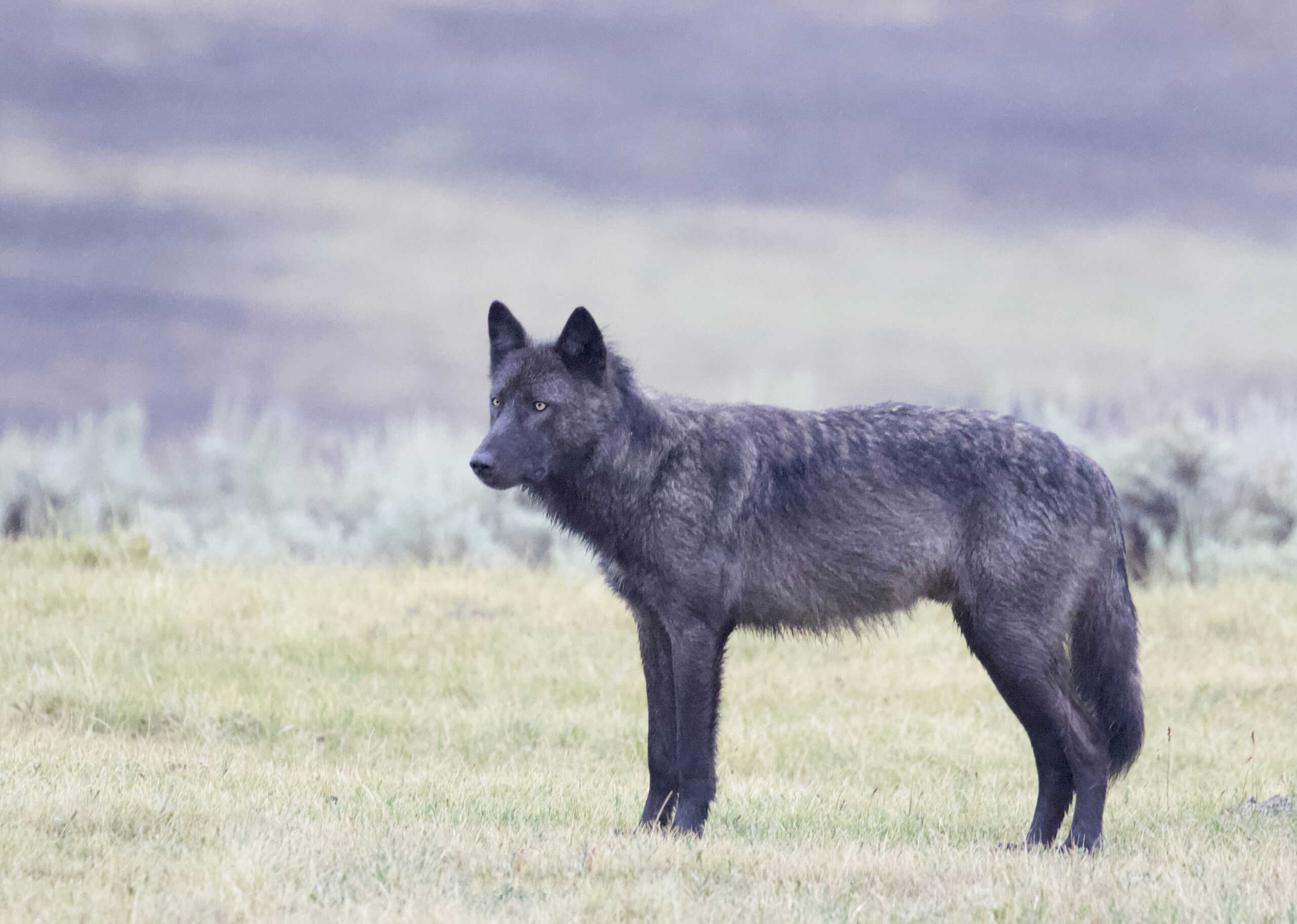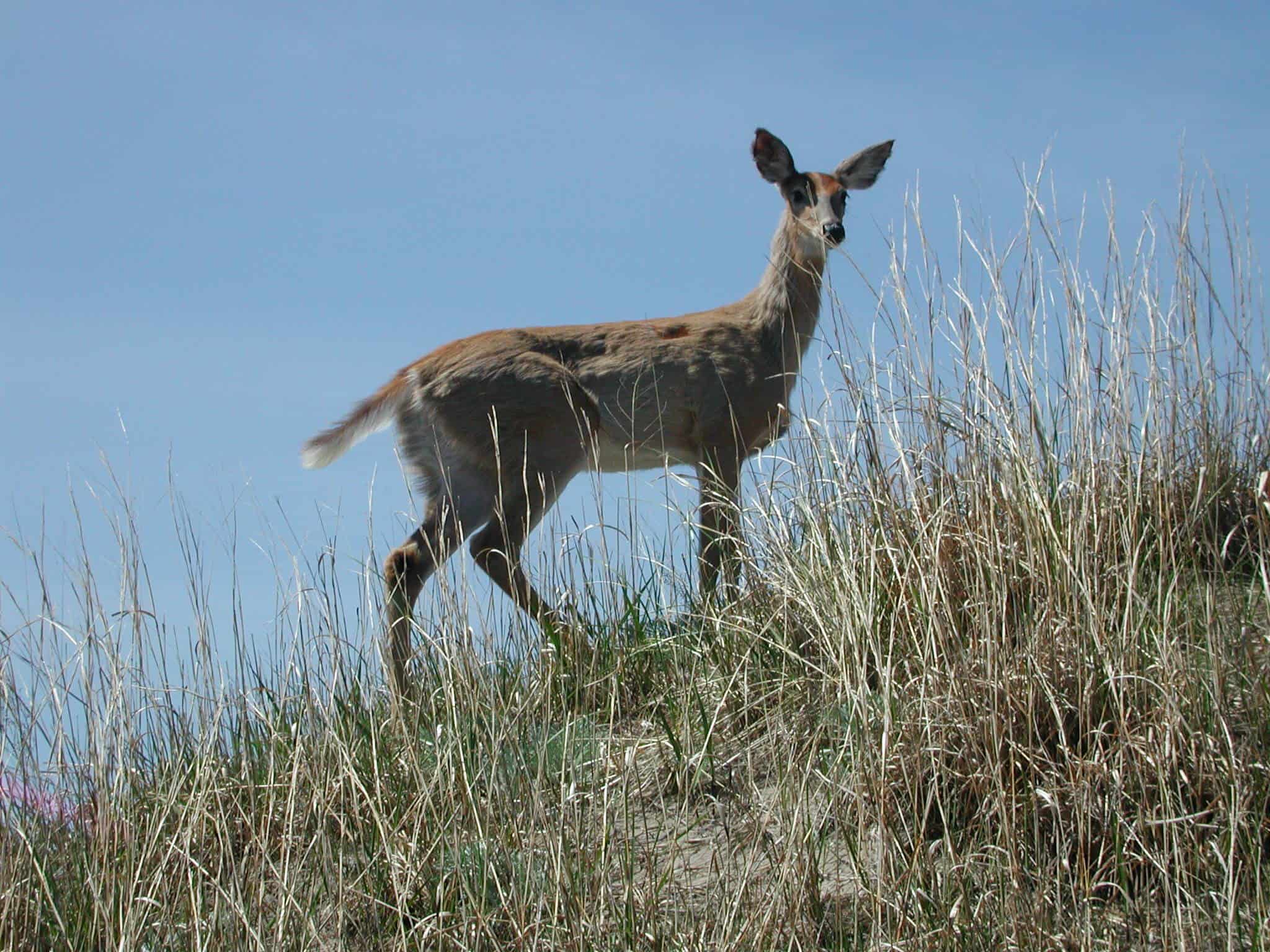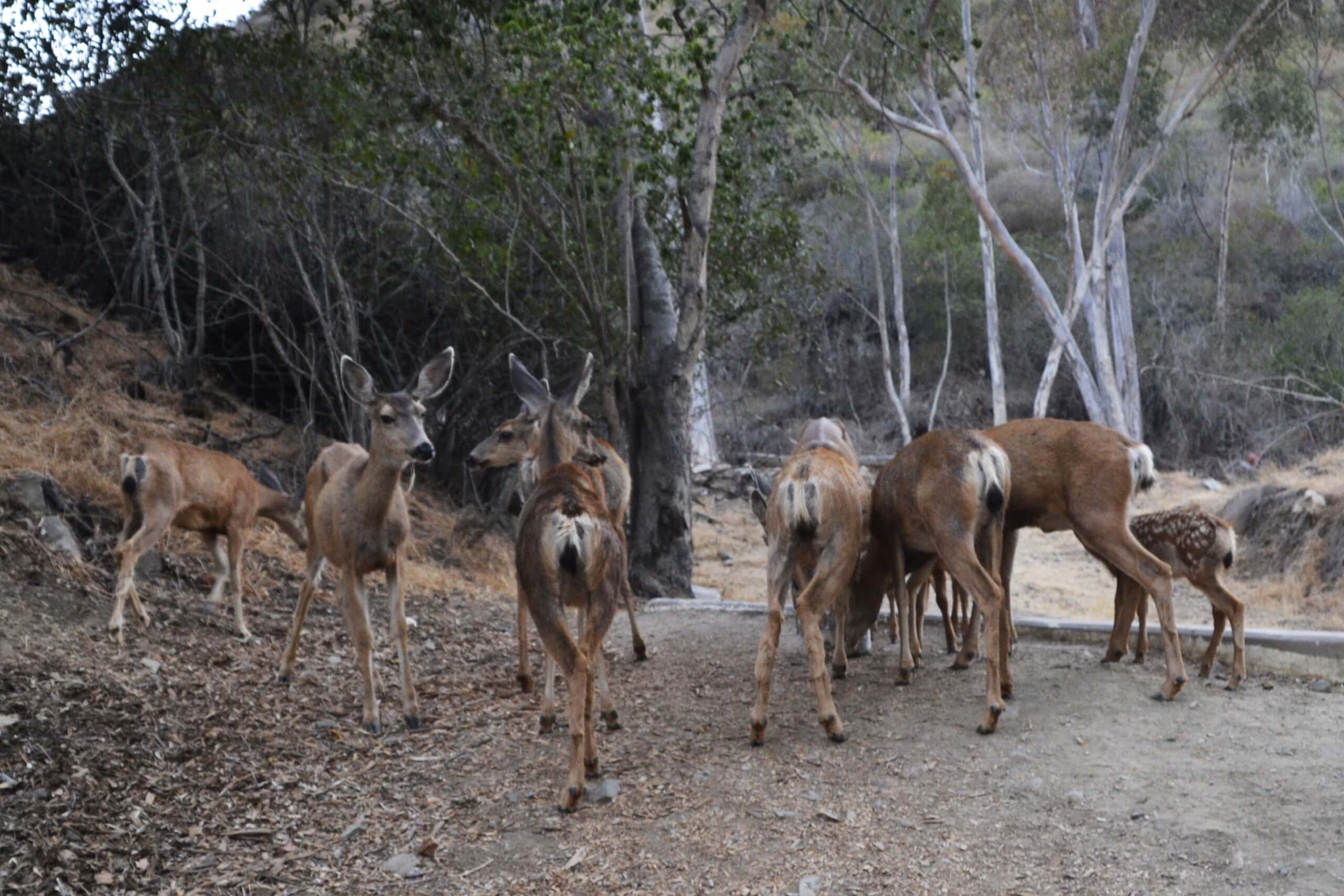Share this article
Wildlife Featured in this article
- coaster brook trout
- beavers
Removing beaver dams to protect massive brook trout
Wildlife Services worked to remove beaver dams to improve habitats for massive coaster brook trout
Most anglers are familiar with brook trout. Spectacular but petite, these stream-dwelling species are native to small streams throughout much of the U.S.
But imagine a brook trout measured not in inches and ounces, but in feet and pounds. These massive “coasters” hatch in small tributaries that feed into Lake Superior, migrate to the lake to mature, then return to the tributaries to spawn.
USDA-Wildlife Services is collaborating with local, state and federal agencies in Michigan and Wisconsin to protect stream habitat crucial to the life cycle of coaster brook trout (Salvelinus fontinalis), which grow up to three times larger than inland stream brook trout—as much as 24 inches.
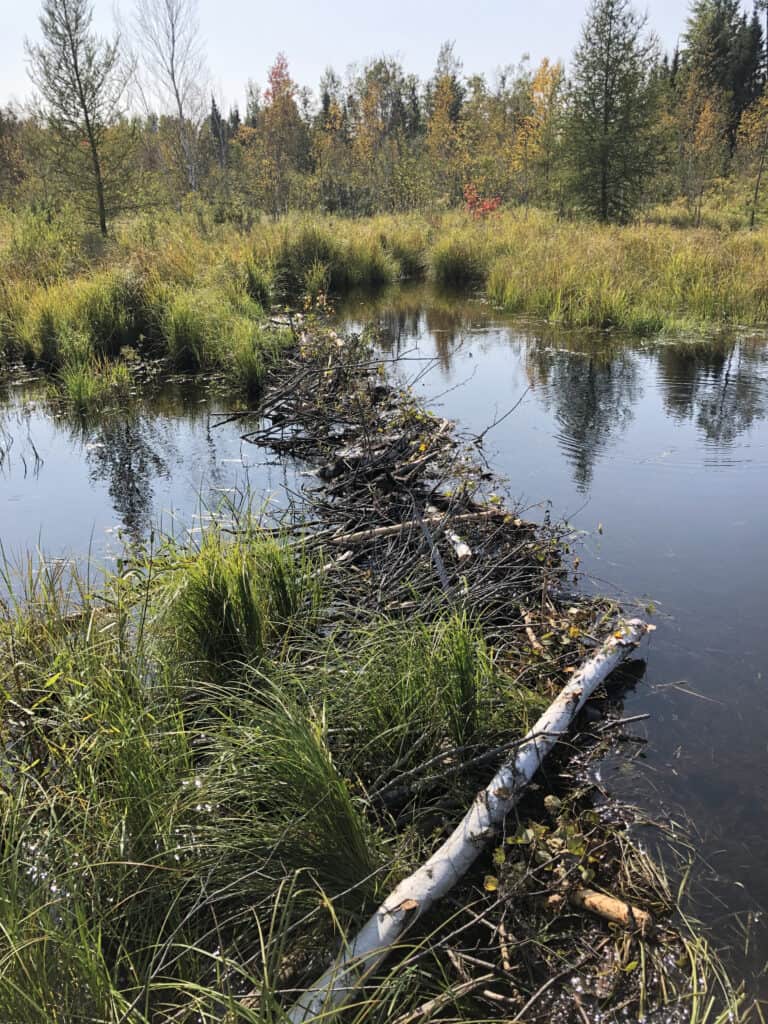
Beaver dams are a major cause of habitat degradation in the streams that drain into Lake Superior, Lake Huron and Lake Michigan. While beaver ponds can be beneficial to some species of wildlife, obstructions on these small tributaries can negatively impact critical habitat for migrating fish, including brook trout, particularly during spawning season. A single obstruction has the potential to impact fish passage over miles of the stream and can disrupt gravel stream bottoms necessary for successful spawning, decrease stream flow causing lower oxygen levels and negatively increase water temperature.
Guided by the Great Lakes Restoration Initiative Action Plan, the collaborative effort addresses some of the barriers for fish that use tributaries into the Great Lakes by locating and removing beaver obstructions. This maintains targeted streams in a free-flowing condition, reopens barriers to fish passage and allows for rehabilitation of cold-water stream habitat.
Plummeting fur prices and reduced commercial fur trapping have resulted in an increasing beaver population in this region. With an increase in population, there are higher incidences of stream obstructions causing significant degradation of ecosystem quality and substantial reductions in trout production on these tributary streams.
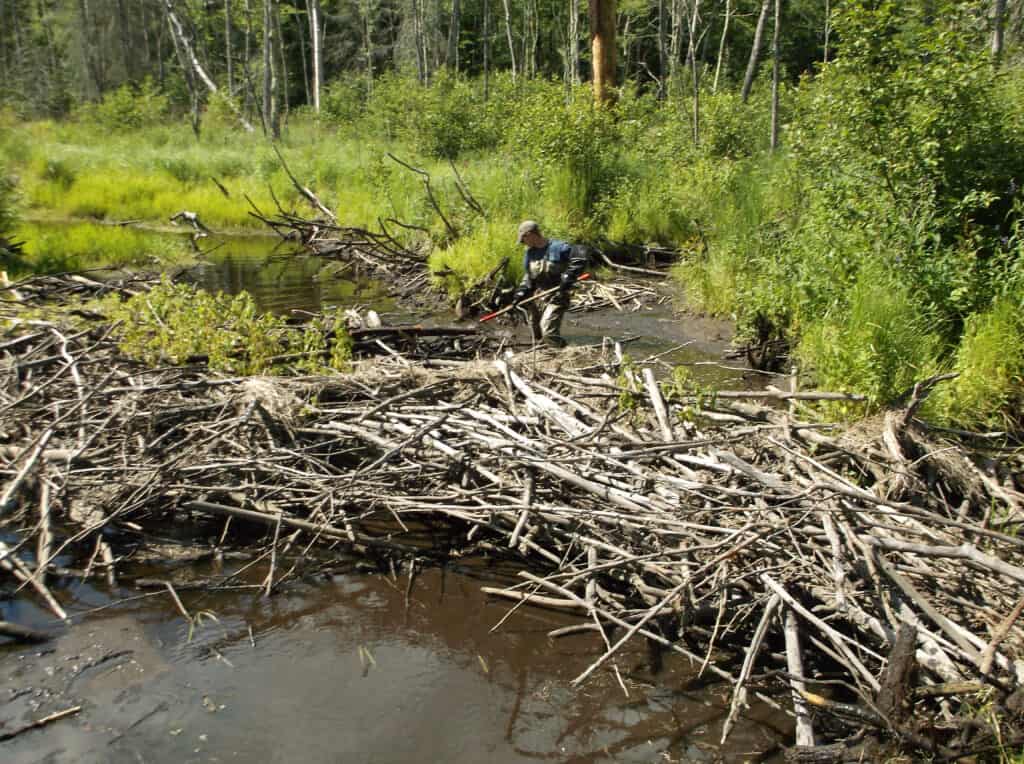
Wildlife Services coordinated with the Michigan and Wisconsin departments of natural resources to identify stream locations that represented traditional coaster brook trout habitat. Staff then surveyed designated streams on foot, watercraft and fixed-wing aircraft to identify stream barriers. After locating beaver activity and dams through surveying, barriers were removed using a combination of hand pulling and explosives.
From 2018 to 2021, where the goal was to protect areas of coastal wetland and other habitats in Michigan, Wildlife Services staff monitored targeted areas along 19 streams, surveying approximately 200 acres and removing 120 beaver dams. During the same timeframe, Wildlife Services staff in Wisconsin worked to maintain stream connectivity established for aquatic species. Wisconsin Wildlife Services staff monitored targeted areas along 32 streams, spanning just over 300 miles, and removed a total of 225 beaver dams.
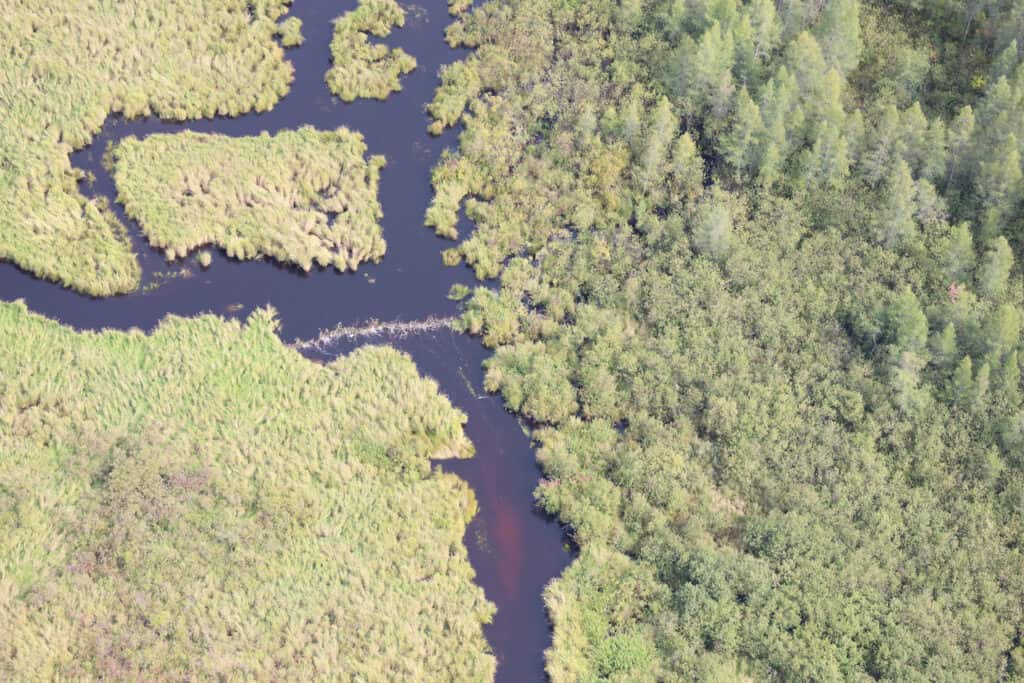
While the number of obstructions removed on a particular stream may decrease over time due to removal, beaver continue to colonize target streams requiring annual removal of beavers and obstructions. Since a pair of beavers can construct a barrier dam in as little as a day, continual stream surveys are crucial for success in maintaining the free-flowing conditions conducive to coaster brook trout migrations. Wildlife Services will continue to work with cooperators to ensure fish habitat and the ability for fish to migrate to spawning grounds is secured.
Header Image: Coaster brook trout can grow three times the size inland stream brook trout. Credit: USFWS Ashland



